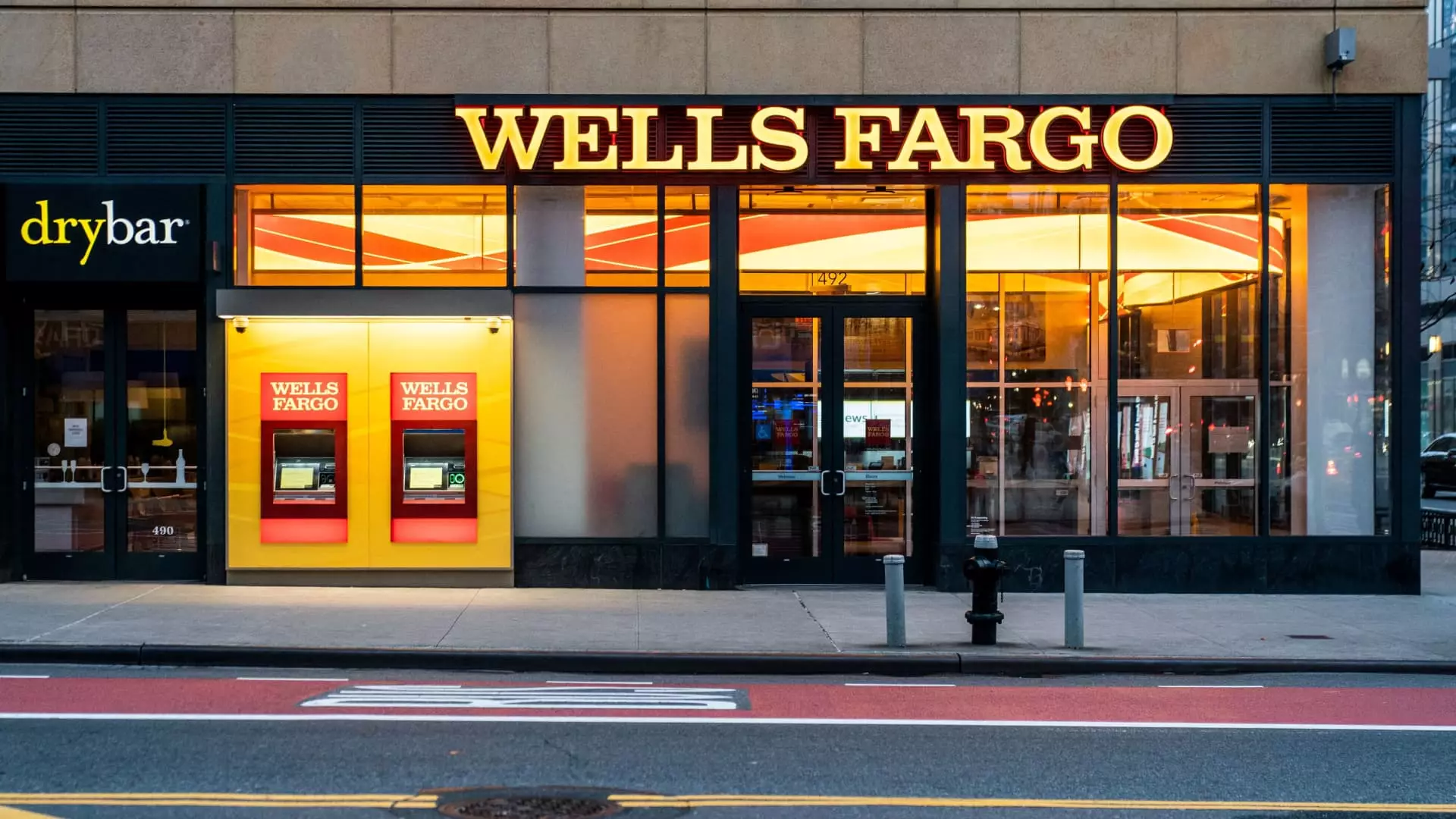Wells Fargo’s latest financial report has sent tremors through the banking industry, revealing a concerning divergence between expected and actual performance figures. With adjusted earnings at $1.33 per share, surpassing the Wall Street forecast of $1.24, one might presume stability. However, the core of the report tells a different story. Revenue plummeted to $20.15 billion, a stark disappointment compared to the anticipated $20.75 billion. This discrepancy is more than just numbers; it reflects deeper issues within the bank’s operational strategy and its overarching market strategy.
While Wells Fargo’s net income did show a nominal increase of 6% year over year to $4.89 billion, this growth is rendered insignificant when juxtaposed against the 3% drop in revenue from the previous year. Such a performance raises questions about the bank’s ability to generate sustainable income amidst fluctuating economic conditions.
The Key Indicator: Net Interest Income Falls Short
Perhaps the most telling statistic in Wells Fargo’s report is the 6% year-over-year decline in net interest income, which has plummeted to $11.50 billion. This downturn is worrisome as it underscores the challenges facing the bank’s lending operations amidst rising interest rates and an evolving financial landscape. The declining net interest income reflects not only reduced lending capabilities but also poses a significant challenge to future profitability.
In an environment where banks typically thrive on the spread between interest rates for deposits and loans, Wells Fargo seems to be struggling to navigate these waters effectively. The bank’s focus must shift to innovative financial products or improved risk assessment strategies to recover from this troubling trend.
Leadership Perspective: Navigating Economic Uncertainty
CEO Charlie Scharf’s comments on the uncertainty fueled by past trade policies illustrate the complex landscape Wells Fargo faces. The bank’s cautionary stance regarding global trade and economic policies under the Trump administration highlights a central theme: instability breeds risk. Scharf’s acknowledgment of a potential economic downturn in 2025 reveals a bank that is bracing itself while hoping for a swift resolution of ongoing issues.
Yet, amidst this cautious approach, the bank also engaged in a significant share buyback of $3.5 billion. While returning capital to shareholders is generally viewed positively, one must question if this decision was made at the expense of investing in long-term growth strategies that could mitigate the impacts of volatility. Such buybacks can often be a double-edged sword; they might impress short-term investors but may undermine the bank’s future operational robustness.
A Mixed Bag for Investors and Stakeholders
Overall, Wells Fargo’s first quarter results are a mixed bag, leaving investors with more questions than answers. The 1% decline in shares in response to the report is indicative of market sentiment regarding the bank’s future. Investors are acutely aware that while earnings figures may satisfy expectations, deeper issues like declining revenues and net interest income cannot be overlooked.
As the banking sector evolves, driven by technology and shifting economic paradigms, Wells Fargo stands at a crossroads. It needs to reassess its strategic vision to adapt effectively or risk being left behind in an increasingly competitive landscape. Investors, shareholders, and stakeholders alike are right to scrutinize these results, questioning whether the bank can indeed navigate the unpredictable waters ahead.

